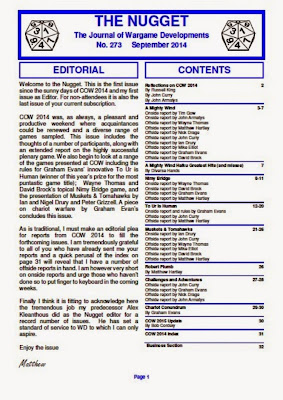Over the weekend I bought a copy of WARGAMES, SOLDIERS & STRATEGY at the Bluewater branch of WHSmith. Unlike MINIATURE WARGAMES WITH BATTLEGAMES, which I get every month, I only buy WARGAMES, SOLDIERS & STRATEGY when it has a theme that interests me. This particular issue's theme was Operation Market Garden ... and as my father was a member of an airborne unit (but not one that took part in this particular military operations) I decided to buy it.
One article that was not related to this issue's theme but which I really enjoyed reading was Otto Schmidt's TO FOURDOOR WHERE THE SUNNY DAYS LAY. This is written in Otto's familiar style, and extolled the virtues of fun wargaming using imagi-nations ... something that I wholeheartedly agree with.
One thing that I particularly liked about this article was the photograph that accompanied it. The Freedonian tank is the sort of design that I would have come up with, combining as it does the hull of a Russian T-26 tank with the running gear of a German Pzkpfw III, topped off with a large cylindrical turret of unknown origin.
Simply marvellous!
One article that was not related to this issue's theme but which I really enjoyed reading was Otto Schmidt's TO FOURDOOR WHERE THE SUNNY DAYS LAY. This is written in Otto's familiar style, and extolled the virtues of fun wargaming using imagi-nations ... something that I wholeheartedly agree with.
One thing that I particularly liked about this article was the photograph that accompanied it. The Freedonian tank is the sort of design that I would have come up with, combining as it does the hull of a Russian T-26 tank with the running gear of a German Pzkpfw III, topped off with a large cylindrical turret of unknown origin.
Simply marvellous!


































